Analysis of PM2.5, PM10, and Total Suspended Particle Exposure in the Tema Metropolitan Area of Ghana
Abstract
1. Introduction
2. Materials and Methods
2.1. Study Area
2.2. Measurements
2.3. Quality Assurance
2.4. Statistical Analysis
- A response variable y = PM2.5;
- Linear predictors (here, X1 = weeks, X2 = locations);
- The distribution of y (exponential dispersion family);
- Link function with ;
- A prior weight .
3. Results
3.1. Descriptive Statistics
3.2. Differences between Baseline Pollution Levels and Study Period Pollution Levels
3.3. Levels of Dust Pollution across the Four (4) Locations
3.4. Correlation Analysis for PM2.5, PM10, and TSP
3.5. Model for PM2.5
Model Diagnostics for PM2.5
3.6. Model for PM10
Model Diagnostics for PM10
3.7. Model for TSP
Model Diagnostics for TSP
4. Discussion
5. Conclusions
Author Contributions
Funding
Institutional Review Board Statement
Informed Consent Statement
Data Availability Statement
Acknowledgments
Conflicts of Interest
References
- Wang, H.; Dwyer-Lindgren, L.; Lofgren, K.T.; Rajaratnam, J.K.; Marcus, J.R.; Levin-Rector, A.; Levitz, C.E.; Lopez, A.D.; Murray, C.J.L. Age specific and sex-specific mortality in 187 countries, 1970–2010: A systematic analysis for the global burden of disease study 2010. Lancet 2012, 380, 2071–2094. [Google Scholar] [CrossRef]
- Guan, D.B.; Su, X.; Zhang, Q.; Peters, G.P.; Liu, Z.; Lei, Y.; He, K. The socioeconomic drivers of China’s primary PM2.5 emissions. Environ. Res. Lett. 2014, 9, 024010. [Google Scholar] [CrossRef]
- Lei, Y.; Zhang, Q.; He, K.B.; Streets, D.G. Primary anthropogenic aerosol emission trends for China, 1990–2005. Atmos. Chem. Phys. 2011, 11, 931–954. [Google Scholar] [CrossRef]
- Wang, H.; Shi, G.; Tian, M.; Zhang, L.; Chen, Y.; Yang, F.; Cao, X. Aerosol optical properties and chemical composition apportionment in Sichuan Basin, China. Sci. Total Environ. 2017, 577, 245–257. [Google Scholar] [CrossRef]
- Egyptian Environmental Impact Assessment on Egyptian Natural Gas Company (GASCO) PETROSAFE. 2007. Available online: http://www.eib.org/attachments/pipeline/20070088_nts_en.pdf (accessed on 25 February 2021).
- Chen, L.D.; Gao, Q.C. Chance and Challenge for China on Ecosystem Management: Lessons from West to East Pipeline Project Construction. J. Hum. Environ. 2006, 35, 91–93. [Google Scholar] [CrossRef]
- Tomareva, I.A.; Kozlovtseva, E.; Perfilov, V.A. Impact of Pipeline Construction on Air Environment. IOP Conf. Ser. Mater. Sci. Eng. 2017, 262, 12168. [Google Scholar] [CrossRef]
- Ren, L.H.; Zhou, Z.E.; Zhoa, X.Y.; Yang, W.; Yin, B.H.; Bai, Z.W.; Ji, Y.Q. Source apportionment of PM10 and PM2.5 in Urban Areas of Chongqing. Res. Environ. Sci. 2014, 27, 1387–1394. [Google Scholar]
- Song, N.; Xu, H.; Bi, X.H.; Wu, J.H.; Zhang, Y.F.; Feng, H.H.; Feng, Y.C. Source apportionment of PM2.5 and PM10 in Haikou. Res. Environ. Sci. 2015, 28, 1501–1509. [Google Scholar]
- Mao, P.; Li, J.; Jin, L.; Qi, J. Evaluation on Effects of Construction Dust Pollution on Economic Loss. In Proceedings of the International Conference on Construction and Real Estate Management, Guangzhou, China, 10–12 November 2017. [Google Scholar] [CrossRef]
- Rui, D.M.; Chen, J.J.; Feng, Y.C. Study on Source Apportionment for Ambient Air PM10 in Nanjing. J. Environ. Sci. Manag. 2008, 33, 56–58. [Google Scholar]
- Anderson, J.O.; Thundiyil, J.G.; Stolbach, A. Clearing the air: A review of the effects of particulate matter air pollution on human health. J. Med. Toxicol. 2012, 8, 166–175. [Google Scholar] [CrossRef]
- Xia, T.; Zhu, Y.F.; Mu, L.N.; Zhang, Z.F.; Liu, S.J. Pulmonary diseases induced by ambient ultrafine and engineered nanoparticles in twenty-first century. Natl. Sci. Rev. 2016, 3, 416–429. [Google Scholar] [CrossRef]
- Franklin, B.A.; Brook, R.; Pope, C.A. Air pollution and cardiovascular disease. Curr. Probl. Cardiol. 2015, 40, 207–238. [Google Scholar] [CrossRef] [PubMed]
- Hoet, P.H.M.; Brüske-Hohlfeld, I.; Salata, O.V. Nanoparticles—Known and unknown health risks. J. Nanobiotechnol. 2004, 2, 12. [Google Scholar] [CrossRef] [PubMed]
- Olvera, H.A.; Garcia, M.; Li, W.-W.; Yang, H.; Amaya, M.A.; Myers, O.; Burchiel, S.W.; Berwick, M.; Pingtore, N.E. Principal Component Analysis Optimization of a PM2.5 Land Use Regression Model with Small Monitoring Network. Sci. Total Environ. 2012, 425, 27–34. [Google Scholar] [CrossRef] [PubMed]
- Zou, B.; Luo, Y.; Wan, N.; Zheng, Z.; Sternberg, T.; Liao, Y. Performance comparison of LUR and OK in PM2.5 concentration mapping: A multidimensional perspective. Sci. Rep. 2015, 5, 8698. [Google Scholar] [CrossRef] [PubMed]
- Yang, G.; Huang, J.; Li, X. Mining sequential patterns of PM2.5 pollution in three zones in China. J. Clean. Prod. 2018, 170, 388–398. [Google Scholar] [CrossRef]
- Pope, C.A., 3rd; Thun, M.J.; Namboodiri, M.M.; Dockery, D.W.; Evans, J.S.; Speizer, F.E.; Heath, C.W. Particulate air pollution as a predictor of mortality in a prospective study of U.S. adults. Am. J. Respir. Crit. Care Med. 1995, 151, 669–674. [Google Scholar] [CrossRef]
- Du, X.; Kong, Q.; Ge, W.; Zhang, S.; Fu, L. Characterization of personal exposure concentration of fine particles for adults and children exposed to high ambient concentrations in Beijing, China. J. Environ. Sci. 2010, 22, 1757–1764. [Google Scholar] [CrossRef]
- Ahmed, C.M.S.; Jiang, H.; Chen, J.Y.; Lin, Y.-H. Traffic-Related Particulate Matter and Cardiometabolic Syndrome: A Review. Atmosphere 2018, 9, 336. [Google Scholar] [CrossRef]
- Zhang, H.; Tripathi, N.K. Geospatial hot spot analysis of lung cancer patients correlated to fine particulate matter (PM2.5) and industrial wind in eastern Thailand. J. Clean. Prod. 2018, 170, 407–424. [Google Scholar] [CrossRef]
- Leelossy, A.; Molnar, F.; Izsak, F.; Havasi, A. Dispersion Modeling of Air Pollutants in the Atmosphere: A Review. Open Geosci. 2014, 6, 257–258. [Google Scholar] [CrossRef]
- Liu, Y.; Lan, B.; Shirai, J.; Austin, E.; Yang, C.; Seto, E. Exposures to Air Pollution and Noise from Multi-Modal Commuting in a Chinese City. Int. J. Environ. Res. Public Health 2019, 16, 2539. [Google Scholar] [CrossRef]
- Lilic, N.; Cvjetic, A.; Knezevic, D.; Milisavljevic, V.; Pantelic, U. Dust and Noise Environmental Impact Assessment and Control in Serbian Mining Practice. Minerals 2018, 8, 34. [Google Scholar] [CrossRef]
- Kesarkar, A.P.; Dalvi, M.; Kaginalkar, A.; Ojha, A. Coupling of the Weather Research and Forecasting Model with AERMOD for pollutant dispersion modeling. A case study for PM10 dispersion over Pune, India. Atmos. Environ. 2007, 41, 1976–1988. [Google Scholar] [CrossRef]
- Yan, H.; Ding, G.; Li, H.; Wang, Y.; Zhang, L.; Shen, Q.; Feng, K. Field Evaluation of the Dust Impacts from Construction Sites on Surrounding Areas: A City Case Study in China. Sustainability 2019, 11, 1906. [Google Scholar] [CrossRef]
- Ghana EPA. Annual Report 2015. Retrieved from Accra. 2016. Available online: http://www.epa.gov.gh/epa/sites/default/files/downloads/publications/2015%20Annual%20Report.pdf (accessed on 25 February 2021).
- WHO. Air Quality Guidelines for Particulate Matter, Ozone, Nitrogen Dioxide and Sulfur Dioxide. Global Update 2006, WHO/SDE/PHE/OEH/06.02. 2006. Available online: https://apps.who.int/iris/bitstream/handle/10665/69477/WHO_SDE_PHE_OEH_06.02_eng.pdf?sequence=1 (accessed on 25 February 2021).
- WHO. WHO’s Ambient Air Pollution Database-Update 2014. Retrieved from Geneva. Available online: https://www.who.int/phe/health_topics/outdoorair/databases/AAP_database_results_2014.pdf (accessed on 25 February 2021).
- Sarpong, S.; Sarpong, A.; Lee, Y. A Model for Determining Predictors of the MUAC in Acute Malnutrition in Ghana. Int. J. Environ. Res. Public Health 2021, 18, 3792. [Google Scholar] [CrossRef] [PubMed]
- Sarpong, S.A.; Avuglah, R.K.; Nsowah-Nuamah, N.N.N. Application of Joint Generalized Linear Models in Determining Physical Support Factors that Influence Crop Yield in Northern Ghana. Univers. J. Agric. Res. 2020, 8, 124–130. [Google Scholar] [CrossRef]
- Lee, Y.; Nelder, J.A.; Pawitan, Y. Generalized Linear Models with Random Effects: Unified Analysis via H-Likelihood; CRC Press: Boca Raton, FL, USA, 2018. [Google Scholar]
- Lee, Y.; Nelder, J.A. Double hierarchical generalized linear models (with discussion). J. R. Stat. Soc. Ser. C Appl. Stat. 2006, 55, 139–185. [Google Scholar] [CrossRef]
- Ryu, J.; Park, C.; Jeon, S.W. Mapping and statistical analysis of NO2 concentration for local government air quality regulation. Sustainability 2019, 11, 3809. [Google Scholar] [CrossRef]
- Shi, G.; Peng, X.; Liu, J.; Tian, Y.; Song, D.; Yu, H.; Feng, Y.; Russell, A.G. Quantification of long-term primary and secondary source contributions to carbonaceous aerosols. Environ. Pollut. 2016, 219, 897–905. [Google Scholar] [CrossRef] [PubMed]
- Yan, S.; Wei, L.; Duan, Y.; Li, H.; Liao, Y.; Lv, Q.; Zhu, F.; Wang, Z.; Lu, W.; Yin, P.; et al. Short-Term Effects of Meteorological Factors and Air Pollutants on Hand, Foot and Mouth Disease among Children in Shenzhen, China, 2009–2017. Int. J. Environ. Res. Public Health 2019, 16, 3639. [Google Scholar] [CrossRef] [PubMed]
- Fontes, T.; Li, P.; Barros, N.; Zhao, P. Trends of PM2.5 concentrations in China: A long term approach. J. Environ. Manag. 2017, 196, 719–732. [Google Scholar] [CrossRef] [PubMed]
- Huang, J.; Deng, F.; Wu, S.; Guo, X. Comparisons of personal exposure to PM2.5 and CO by different commuting modes in Beijing, China. Sci. Total Environ. 2012, 425, 52–59. [Google Scholar] [CrossRef] [PubMed]
- Suárez, L.; Mesías, S.; Iglesias, V.; Silva, C.; Cáceres, D.D.; Ruiz-Rudolph, P. Personal exposure to particulate matter in commuters using different transport modes (bus, bicycle, car and subway) in an assigned route in downtown Santiago, Chile. Environ. Sci. Process. Impacts 2014, 16, 1309–1317. [Google Scholar] [CrossRef]
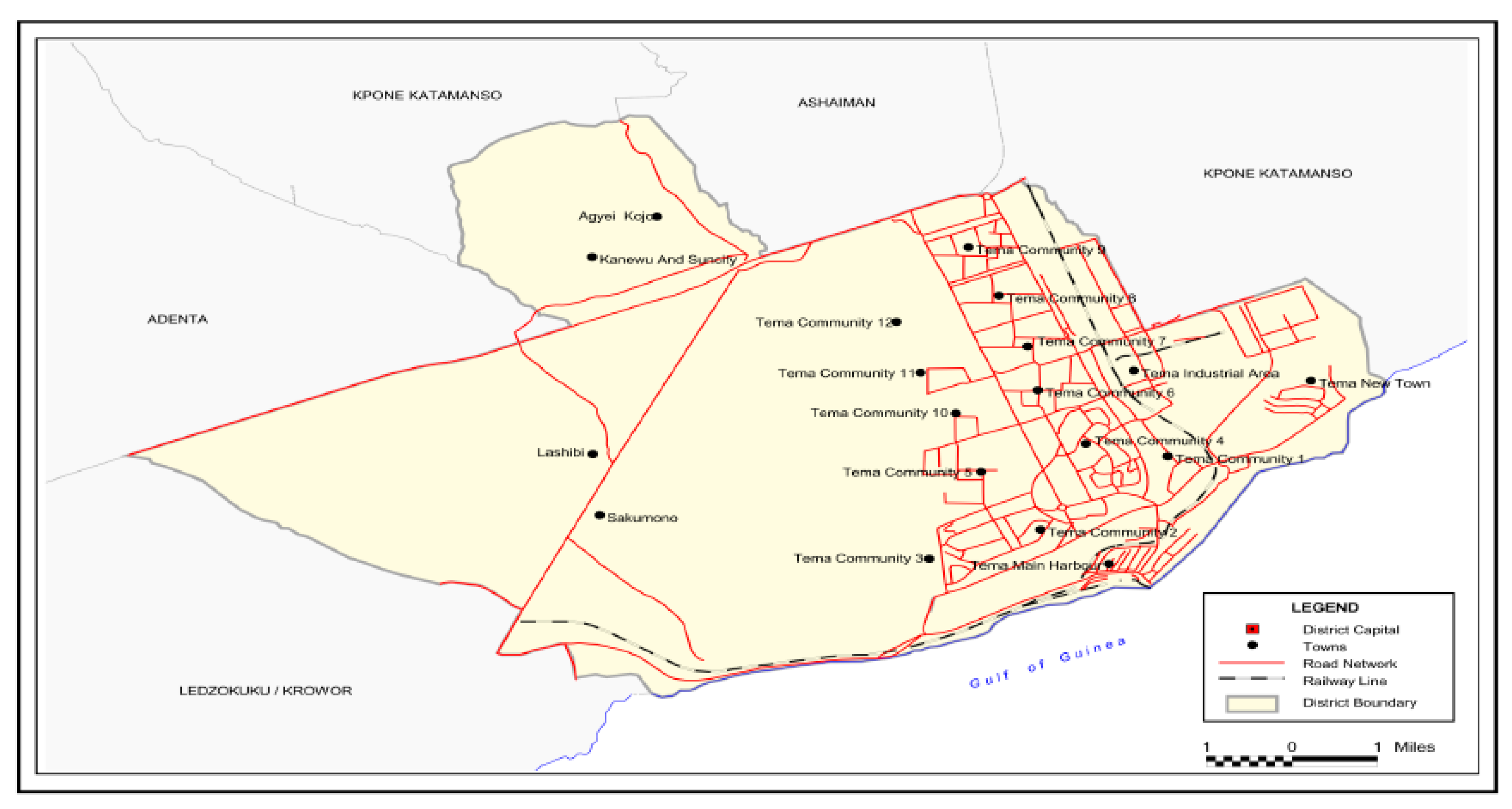
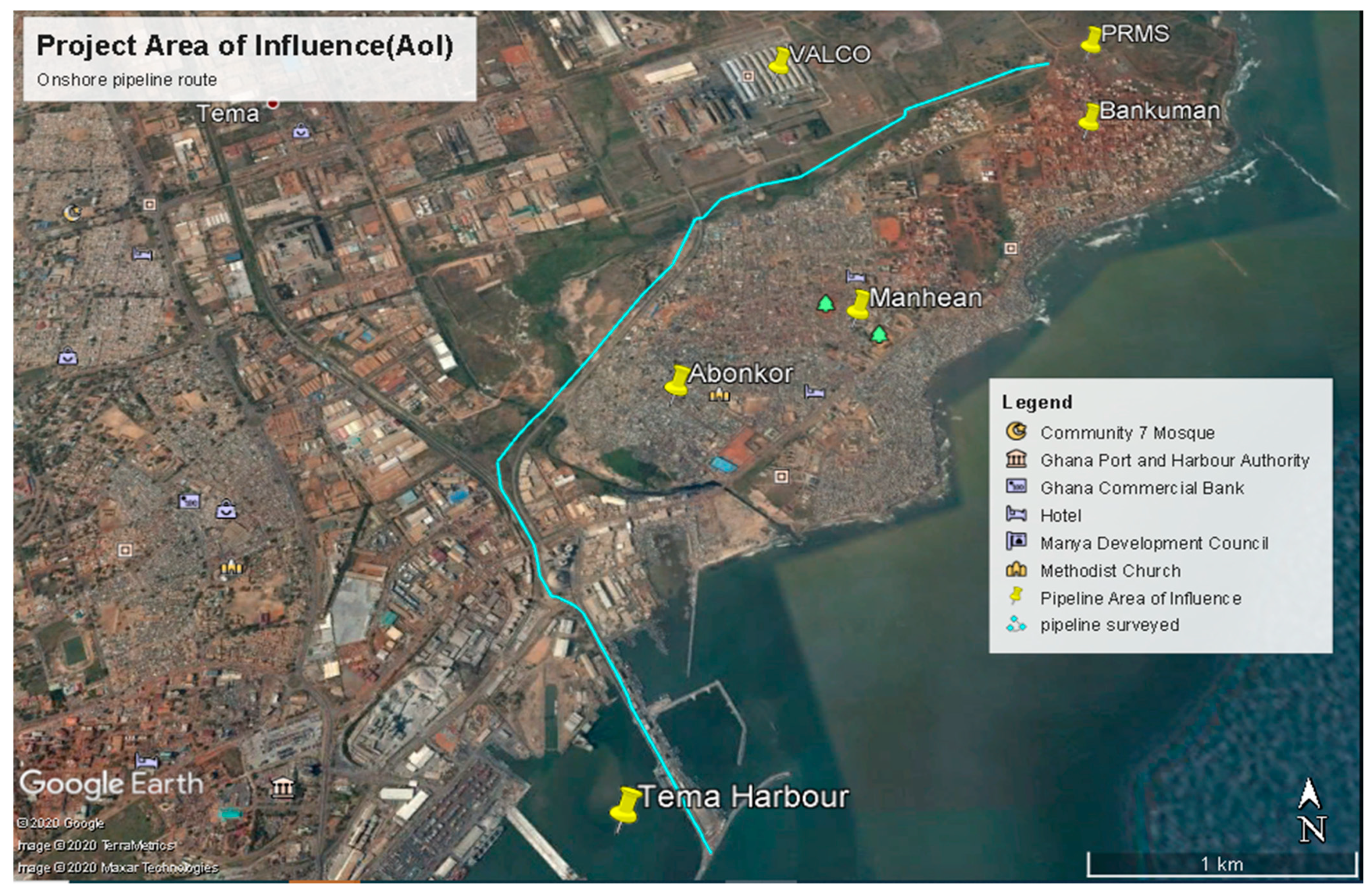
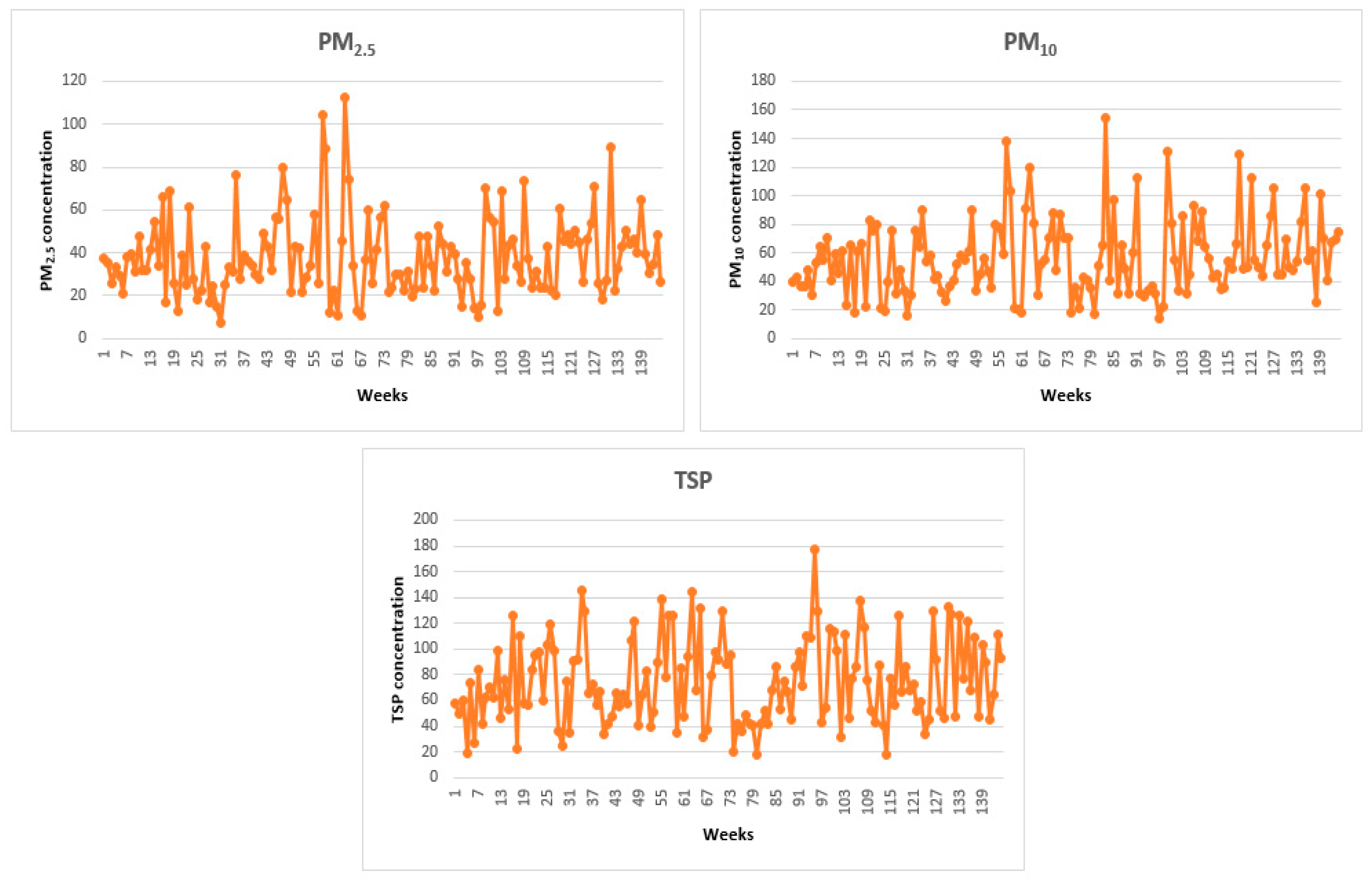
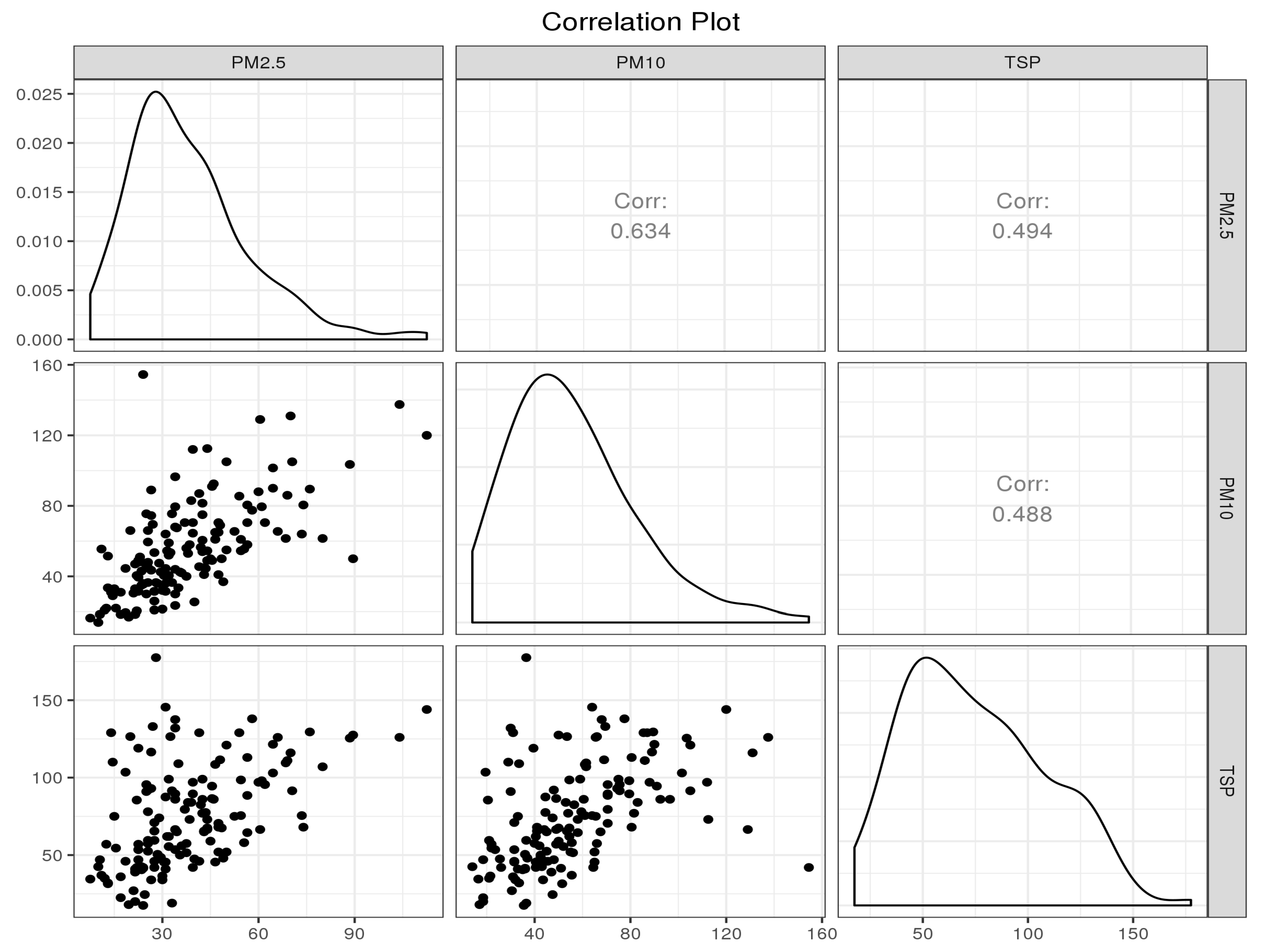
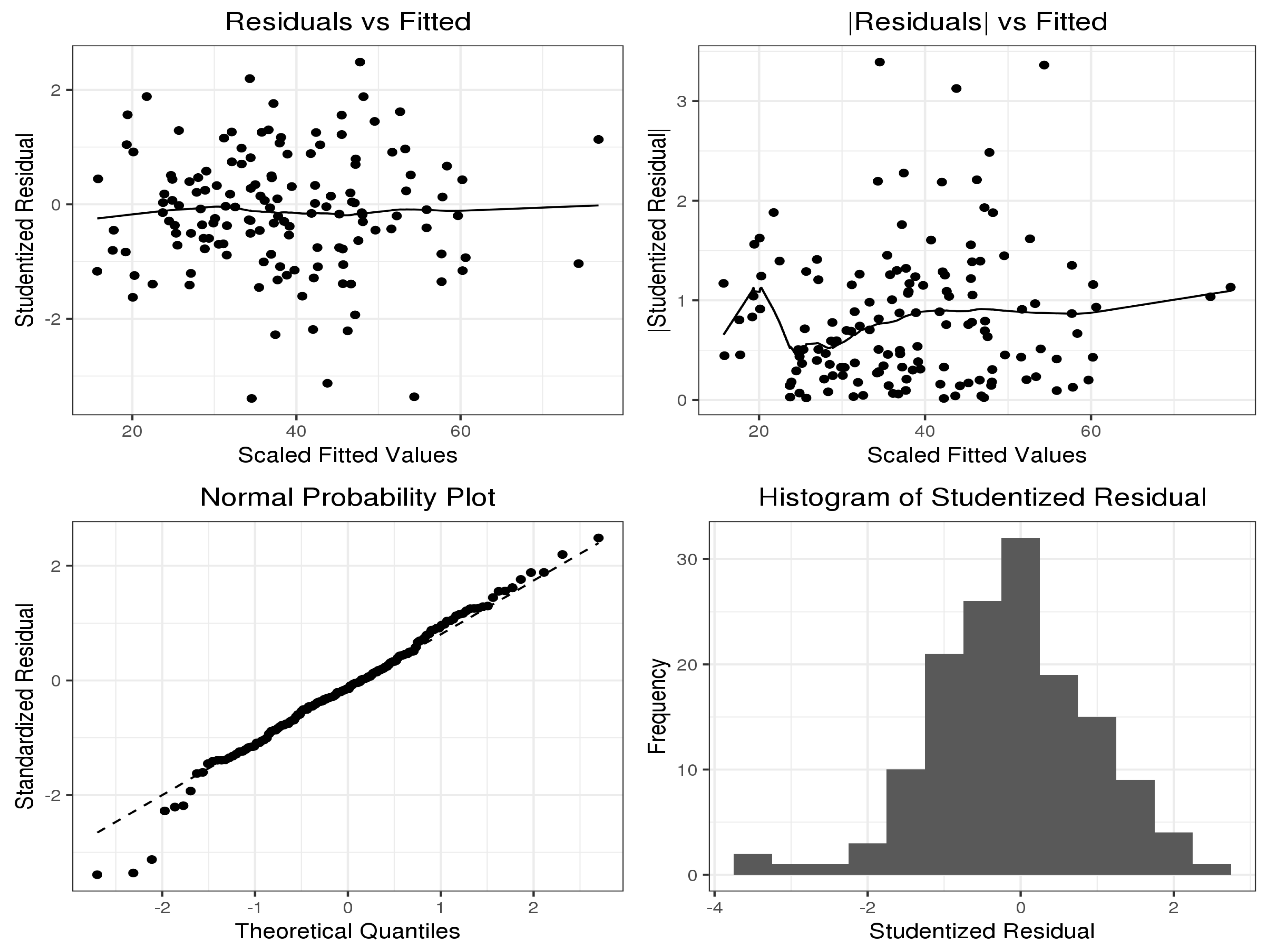

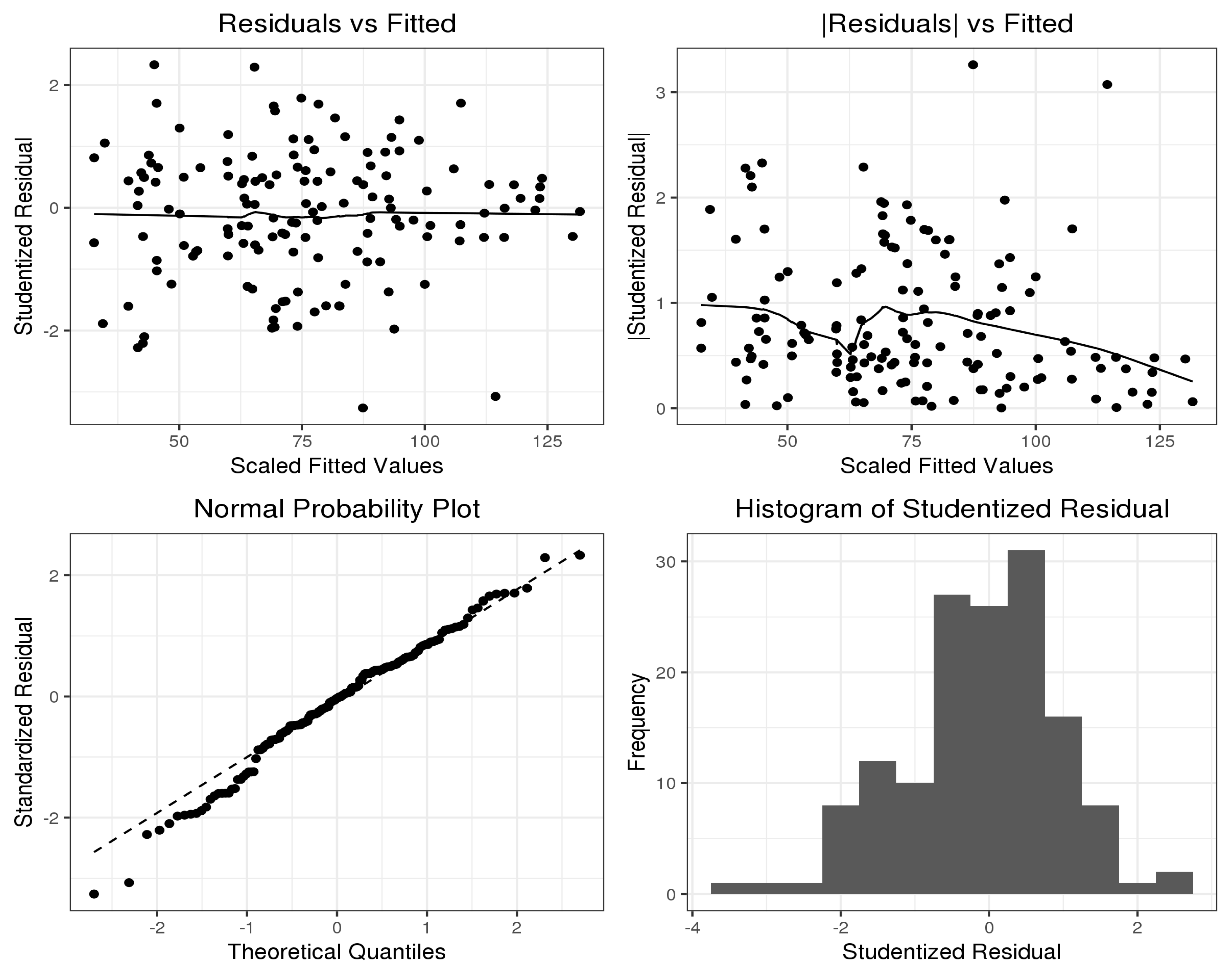
| Pollutants | Mean | N | Std. Deviation | Std. Error Mean | |
|---|---|---|---|---|---|
| Pair 1 | PM2.5 (Base) | 38.85 | 144 | 20.7337 | 1.7278 |
| PM2.5 | 38.094 | 144 | 18.8788 | 1.5732 | |
| Pair 2 | PM10 (Base) | 69.425 | 144 | 12.4189 | 1.0349 |
| PM10 | 56.243 | 144 | 26.9193 | 2.2433 | |
| Pair 3 | TSP (Base) | 134.1 | 144 | 29.5117 | 2.4593 |
| TSP | 75.122 | 144 | 33.1614 | 2.7634 | |
| Pollutant | Paired Differences | t | df | Sig. | |||||
|---|---|---|---|---|---|---|---|---|---|
| Mean | Std. Dev | Std. Error Mean | 95% Confidence Interval of the Difference | (2-Tailed) | |||||
| Lower | Upper | ||||||||
| Pair 1 | PM2.5 (Base) | 0.7563 | 24.9381 | 2.0782 | −3.3517 | 4.8642 | 0.364 | 143 | 0.716 |
| PM2.5 | |||||||||
| Pair 2 | PM10 (Base) | 13.1823 | 29.3965 | 2.4497 | 8.34 | 18.0246 | 5.381 | 143 | 0.000 |
| PM10 | |||||||||
| Pair 3 | TSP (Base) | 58.9785 | 43.3274 | 3.6106 | 51.8414 | 66.1155 | 16.335 | 143 | 0.000 |
| TSP | |||||||||
| Pollutant | Location | No Pollution | Pollution | Chi-Square |
|---|---|---|---|---|
| PM2.5 (IFC) | Abonkor | 7 | 29 | 0.499 |
| Bankuman | 7 | 29 | ||
| Oil Jetty | 11 | 25 | ||
| Valco Hospital | 11 | 25 | ||
| Total | 36 | 108 | ||
| PM2.5 (GHA) | Abonkor | 16 | 20 | 0.96 |
| Bankuman | 15 | 21 | ||
| Oil Jetty | 23 | 13 | ||
| Valco Hospital | 23 | 13 | ||
| Total | 77 | 67 | ||
| PM10 (IFC) | Abonkor | 15 | 21 | 0.391 |
| Bankuman | 15 | 21 | ||
| Oil Jetty | 19 | 17 | ||
| Valco Hospital | 21 | 15 | ||
| Total | 70 | 74 | ||
| PM10 (GHA) | Abonkor | 24 | 12 | 0.603 |
| Bankuman | 27 | 9 | ||
| Oil Jetty | 29 | 7 | ||
| Valco Hospital | 27 | 9 | ||
| Total | 107 | 37 | ||
| TSP (GHA) | Abonkor | 36 | 0 | 0.388 |
| Bankuman | 36 | 0 | ||
| Oil Jetty | 36 | 0 | ||
| Valco Hospital | 35 | 1 | ||
| Total | 143 | 1 |
| Estimate | Std. Error | t Value | Pr (>|t|) | |
|---|---|---|---|---|
| (Intercept) | 4.08919 | 0.21929 | 18.64776 | 0.0000 |
| 1st week August 2020 | −0.6199 | 0.29795 | −2.08038 | 0.03992 |
| 3rd week August 2020 | −0.6067 | 0.29795 | −2.03608 | 0.04426 |
| 2nd week December 2020 | −0.8911 | 0.29795 | −2.9907 | 0.00347 |
| 3rd week December 2020 | −1.0902 | 0.29795 | −3.65894 | 0.0004 |
| 2nd week July 2020 | −0.6781 | 0.29795 | −2.27569 | 0.02489 |
| 4th week July 2020 | −0.638 | 0.29795 | −2.1413 | 0.03456 |
| 2nd week November 2020 | −0.8431 | 0.29795 | −2.8298 | 0.00558 |
| 3rd week January 2021 | −0.9768 | 0.29795 | −3.2784 | 0.00142 |
| Oil Jetty | −0.2369 | 0.09932 | −2.38514 | 0.01887 |
| Valco Hospital | −0.2435 | 0.09932 | −2.45161 | 0.01587 |
| Estimate | Std. Error | t Value | Pr (>|t|) | |
|---|---|---|---|---|
| (Intercept) | 4.40756 | 0.20017 | 22.01904 | 0.000 |
| 1st week August 2020 | −0.7801 | 0.27198 | −2.86811 | 0.00499 |
| 3rd week August 2020 | −0.5408 | 0.27198 | −1.98842 | 0.04937 |
| 2nd week December 2020 | −0.9773 | 0.27198 | −3.59332 | 0.0005 |
| 3rd week December 2020 | −1.1339 | 0.27198 | −4.16904 | 0.00006 |
| 1st week July 2020 | −0.6976 | 0.27198 | −2.56485 | 0.01174 |
| 2nd week July 2020 | −0.6801 | 0.27198 | −2.50064 | 0.01394 |
| 3rd week July 2020 | −0.857 | 0.27198 | −3.15107 | 0.00212 |
| 4th week July 2020 | −0.711 | 0.27198 | −2.61407 | 0.01026 |
| 2nd week November 2020 | −0.709 | 0.27198 | −2.60695 | 0.01046 |
| 3rd week October 2020 | −0.7694 | 0.27198 | −2.82879 | 0.0056 |
| 3rd week January 2021 | −0.7766 | 0.27198 | −2.85523 | 0.00518 |
| Estimate | Std. Error | t Value | Pr (>|t|) | |
|---|---|---|---|---|
| (Intercept) | 4.15834 | 0.1964 | 21.17298 | 0.0000 |
| 1st week August 2020 | −0.60835 | 0.26685 | −2.2797 | 0.02465 |
| 1st week December 2020 | 0.58142 | 0.26685 | 2.17879 | 0.03158 |
| 4th week November 2020 | 0.62502 | 0.26685 | 2.34219 | 0.02106 |
| 4th week February 2021 | 0.72145 | 0.26685 | 2.70354 | 0.008 |
| December/January | 0.66109 | 0.26685 | 2.47735 | 0.01483 |
Publisher’s Note: MDPI stays neutral with regard to jurisdictional claims in published maps and institutional affiliations. |
© 2021 by the authors. Licensee MDPI, Basel, Switzerland. This article is an open access article distributed under the terms and conditions of the Creative Commons Attribution (CC BY) license (https://creativecommons.org/licenses/by/4.0/).
Share and Cite
Sarpong, S.A.; Donkoh, R.F.; Konnuba, J.K.-s.; Ohene-Agyei, C.; Lee, Y. Analysis of PM2.5, PM10, and Total Suspended Particle Exposure in the Tema Metropolitan Area of Ghana. Atmosphere 2021, 12, 700. https://doi.org/10.3390/atmos12060700
Sarpong SA, Donkoh RF, Konnuba JK-s, Ohene-Agyei C, Lee Y. Analysis of PM2.5, PM10, and Total Suspended Particle Exposure in the Tema Metropolitan Area of Ghana. Atmosphere. 2021; 12(6):700. https://doi.org/10.3390/atmos12060700
Chicago/Turabian StyleSarpong, Smart Asomaning, Racheal Fosu Donkoh, Joseph Kan-saambayelle Konnuba, Collins Ohene-Agyei, and Youngjo Lee. 2021. "Analysis of PM2.5, PM10, and Total Suspended Particle Exposure in the Tema Metropolitan Area of Ghana" Atmosphere 12, no. 6: 700. https://doi.org/10.3390/atmos12060700
APA StyleSarpong, S. A., Donkoh, R. F., Konnuba, J. K.-s., Ohene-Agyei, C., & Lee, Y. (2021). Analysis of PM2.5, PM10, and Total Suspended Particle Exposure in the Tema Metropolitan Area of Ghana. Atmosphere, 12(6), 700. https://doi.org/10.3390/atmos12060700








